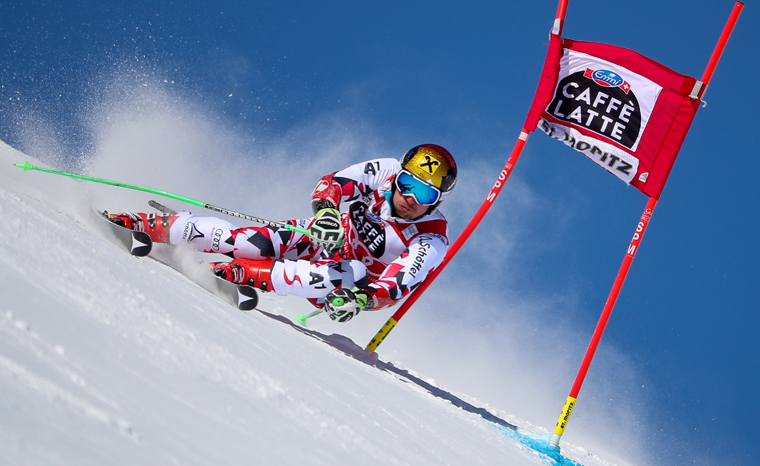Who would win: Marcel Hirscher or Alberto Tomba?


A quarter of a century ago, alpine ski racing ruled the roost in competitive snowsports, with worldwide television viewing figures at an all-time high. Back then, it had no competition from snowboarding, which was still in its infancy, or freestyle skiing, which had only just been accepted onto the Olympic programme.
At the Albertville Games in 1992, defending double Olympic champion Alberto Tomba was skiing’s biggest star. He’d draw tens of thousands of fans to watch him race, often claiming the front page of La Gazzetta dello Sport – quite a feat in football-mad Italy. So what has changed in the 25 years from Tomba’s reign to Marcel Hirscher’s recent dominance? And would Tomba be world class today if he’d been born in 1989 and not 1966?
Alberto on his way to gold at the Calgary Olympics in 1988Alpine skiing is a sport where technique and technology intertwine; improvements in the equipment always result in new ski techniques.
The carving revolution of the late 1990s revolutionised ski technique overnight, but there have been other more subtle changes. Ski binding plates allowed for more edge angle, and boot plastic improved, becoming stiffer, more responsive and less susceptible to temperature change.
Modern ski racing techniques create bigger edge angles and generate more force than in Tomba’s day. Piste preparation has changed too, first with the proliferation of snow making, then with the invention of the water injection bar, which is used to freeze race pistes rock hard. You could say that ski racing is no longer a snowsport, but has turned into an ice sport.
In 1992 Tomba had only just started racing GS in a helmet, and raced the Olympic slalom wearing what looks like a Lycra beanie. Helmets are now mandatory in all alpine disciplines and although optional, most racers wear back protectors even in slalom, with the use of air-bag protectors increasing in the speed events.
So, with all the added safety improvements you might think ski racing is less dangerous than it was 25 years ago, but that is not necessarily the case. In 1991 Gernot Reinstadler was killed when one ski tore through the safety netting in Wengen resulting in him severing his femoral artery. Then just three years later Ulrike Maier died of a broken neck in Garmisch. Fortunately we have been spared any recent fatalities, but Hans Grugger, Daniel Albrecht and Scott Macartney all came close after suffering serious head injuries in Kitzbühel. Last season, on the same course, the two race favourites crashed, with world number one Aksel Lund Svindal tearing his cruciate knee ligament. Ski racing is an inherently dangerous sport and it seems it will stay that way.
There is an argument that in 25 years the racing format’s not changed enough. Apart from a bit of jiggling with the start order and the introduction of the team race, the International Ski Federation has not moved with the times. Any innovation has been left to Ski Cross, Slopestyle and Big Air. Even compared to the supposedly stayed sport of cricket, which introduced Twenty20, the Snickometer and Hot Spot technology, alpine skiing has developed shamefully slowly.
World Cup-winning Marcel in action | GEPA pictures/ Christian WalgramTo answer the question as to how Alberto Tomba would compare to Marcel Hirscher on modern skis? As a youngster Tomba re-invented the slalom technique after spring-loaded poles were introduced to the World Cup in the 1980s, and his technique in GS was unique. I remember watching Hirscher as a 14-year-old in a children’s race in Abetone where he, too, showed that he had something new and special to his technique.
Psychologically, both have what it takes to be true champions, but it is physically where their differences lie. Tomba has a four-inch height advantage over Hirscher and weighed in 15kg heavier. But would the Italian have the flexibility to achieve the angles that Hirscher creates?
Modern training methods can alter physiology. Just as Hirscher used Crossfit a couple of seasons ago to add 7kg in muscle, I’m sure Tomba would have worked physically to become the right shape for the times. So I do think that ‘La Bomba’ would give Hirscher a run for his money.